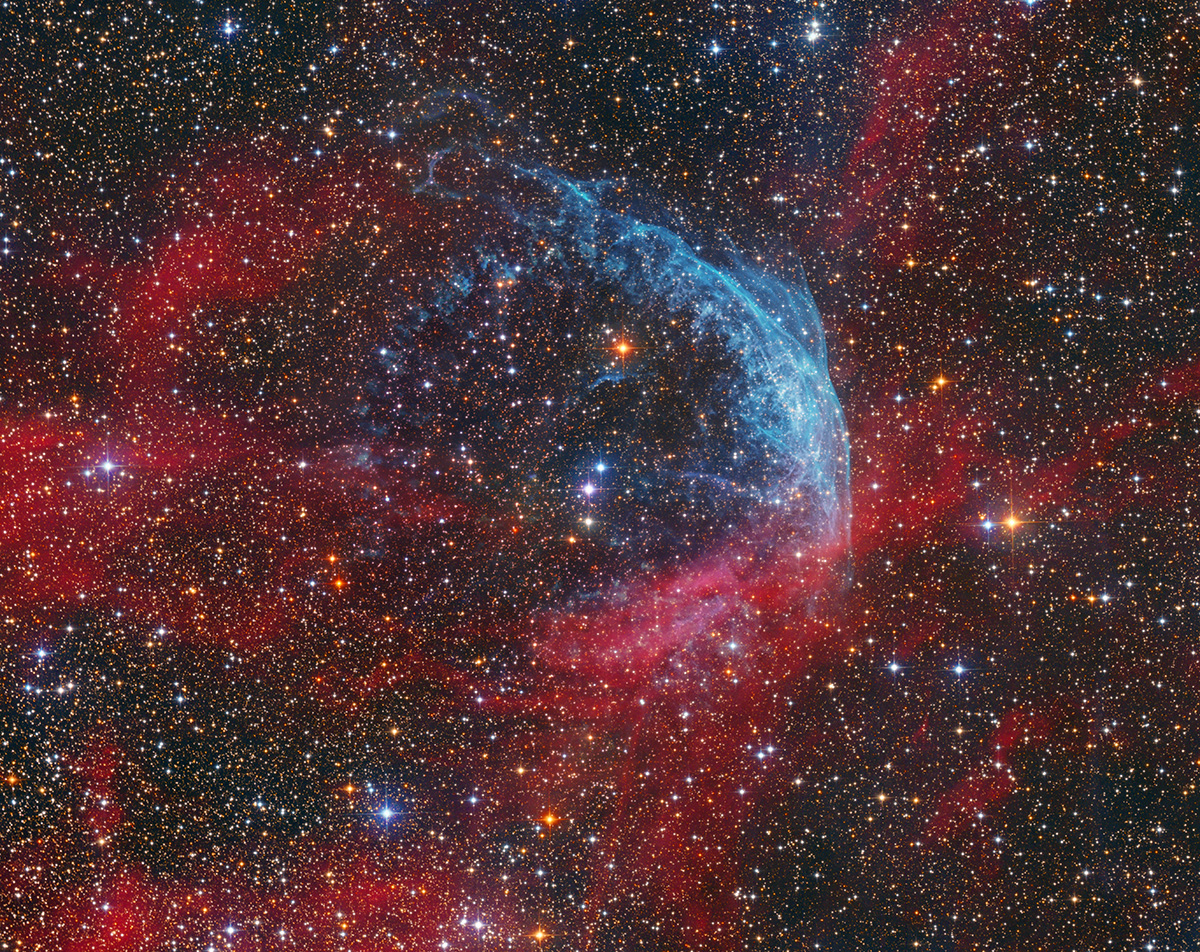
[back] WR 134 Region in Cygnus [NED]
Higher resolved image / höher aufgelöstes Bild (3298 x 2723 Pixel)

|
(c) 2021 All astro photo images are copyrighted. They may not be used or reproduced without explicit written permission from the authors. |
|
5' |
|
About this Image / Über dieses Bild
| CCD: | Moravian G3-16200 and ZWO ASI094MC Pro |
| Image Type, Orientation: | HaOIII-OIII-RGB Composite, North is at 12:00h |
| Exposure time: | Moravian: R,G:12x300 sec., B: 10x300s, OIII:36x300s
(5h50min) ZWO ASI: 52x300s HaOIII (4h20min) (10h10min total) |
| Exposure date: | R,G,B: September 21st 2020, OIII: November 20th 2020, HaOIII: July 12th,20th 2021 |
| Location: | Capella Observatory at Eifel, Germany, remote-controlled from Cologne and Bad Arolsen/Germany |
| Filter: | Moravian: Baader LRGB Filter set and 7nm Baader OIII ZWO ASI: STC Astro Duo-Narrowband Filter |
| Instrument: | Ganymed 60cm-Hypergraph in primary focus (f=1815.9 mm) |
| Photographer: | Frank Sackenheim, Josef Pöpsel, Stefan Binnewies |
| Remarks: |
WR 134 is the strangely pink colored star in the middle
of the picture. A Wolf-Rayet star is characterized by its special spectrum.
In contrast to "normal stars", which essentially have the spectrum of a
Planck radiator, which in turn is clearly determined by the temperature of
the radiator, WR stars have in addition to its into the UV shifted Plack
spectrum a distinctive emission line spectrum. In the
case of WR 134, in the visible part this is primarily ionized helium He II (see e.g.
here). Although the mass of WR 134 is "only" 18 times that of the sun,
it shines about 400,000 times brighter (see
here). |
|
Bemerkungen: |
WR 134 ist der etwas seltsam-farbige pinke Stern in der
Mitte des Bildes. Ein Wolf–Rayet Stern zeichnet sich durch sein besonderes
Spektrum aus. Im Gegensatz zu „normalen Sternen“, die im Wesentlichen das
Spektrum eines Planck-Strahlers besitzen, das wiederum eindeutig durch die
Temperatur des Strahlers bestimmt ist, besitzen WR-Sterne außer ihrem ins UV
verschobene Plack-Spektrum ein ausgeprägtes
Emissionslinien-Spektrum. Bei WR 134 ist das im sichtbaren Bereich vor allem das des einfach
ionisierten Heliums He II (siehe z.B.
hier). Obwohl die Masse von WR 134 „nur“ die 18fache der Sonne beträgt,
leuchtet er doch gut 400000mal heller (siehe
hier). |
Back to the Diffuse Nebulae Overview / Zurück zur Diffuse-Nebel-Übersichtsseite